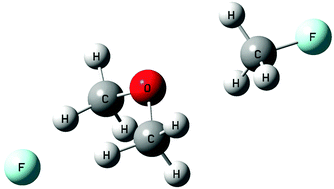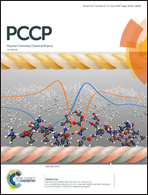The effect of anions on noncovalent interactions in model clusters of chalcogen-containing (CH3)2X (X = O, S, Se) molecules
Abstract
A computational study of F−⋯(CH3)2X⋯YF (X = O, S, Se; Y = F, H) triads, with F− bound to the protons of the two methyl groups, found significant enhancement of the X⋯Y interactions relative to the neutral (CH3)2X⋯YF dyads, more so for the X⋯F than the X⋯H interaction. A subsequent model study of anionic F−⋯(CH3)2O⋯YZ (YZ = HF, CH3F, SiH3F, GeH3F, NF3, OF2, F2, ClF) triads revealed a similar enhancement of all O⋯Y noncovalent interactions. The relative stabilities and associated properties of the O⋯Y σ-hole interactions were rationalized using the electronegativity difference between O and Y. Very strongly bound Z−⋯(CH3)2X–F2 (Z = F, Cl, Br; X = S, Se) clusters were also predicted and involve interactions between the anion Z−, Lewis base (CH3)2X and two F atoms sandwiching the central X atom to form a nearly linear F–X–F axis.



 Please wait while we load your content...
Please wait while we load your content...